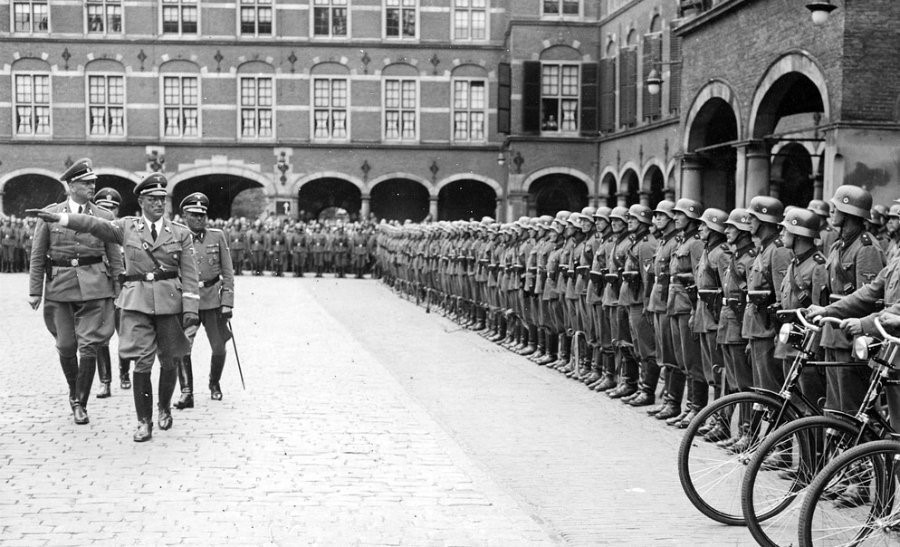In the early morning of 10 May 1940, Germany invaded the Netherlands. The purpose of the 'Battle for The Hague' was to conquer the airports and the city and to capture both the Queen and the Cabinet. Thanks to fierce resistance, with George Maduro and others fighting against the invaders, the German attack failed. But euphoria over the victory was short lived as the Netherlands was eventually nonetheless occupied. Queen Wilhelmina, her family and the government fled to England. The Hague, with the Binnenhof and Plein, became the centre of German rule in the Netherlands. The German Reichskommissar, Dr Arthur Seyss-Inquart, moved into the Logement van Rotterdam at Plein 4. In 1943, construction of German coastal defences commenced with the Atlantic Wall. This anti-tank trench, running through large parts of The Hague and Scheveningen, left a trail of destruction in its wake. Nor was The Hague spared the horrors of the war. Its Jewish community, the second-largest in the Netherlands, was almost completely exterminated; Sinti and Roma residents were also deported to Auschwitz and almost none of them returned. From The Hague, Engelandvaarders braved the crossing to England. One of the best known was 'Soldier of Orange' Erik Hazelhoff Roelzema. But for those arrested in the resistance, the Oranjehotel was the place where the Germans passed judgement. Prisoners who were sentenced to death were executed on the Waalsdorpervlakte. In autumn 1944, there was famine in The Hague. Around 2,100 people died of hunger in 1945 alone. In 1944, the Germans also launched a new weapon: the V-2, the first unmanned guided ballistic missile. An Allied attempt to destroy these V-2 rockets went disastrously wrong, leading to wide-scale bombing of the residential neighbourhood of Bezuidenhout on 3 March 1945. On Saturday, 5 May 1945, the Germans capitulated, but the Allies' official entry into the Hague did not take place until 8 May. The procession was led by units from the Princess Irene Brigade, a Dutch army unit that formed part of the First Canadian Corps and fought alongside the Allies. Queen Wilhelmina returned to The Hague on 6 July 1945.
